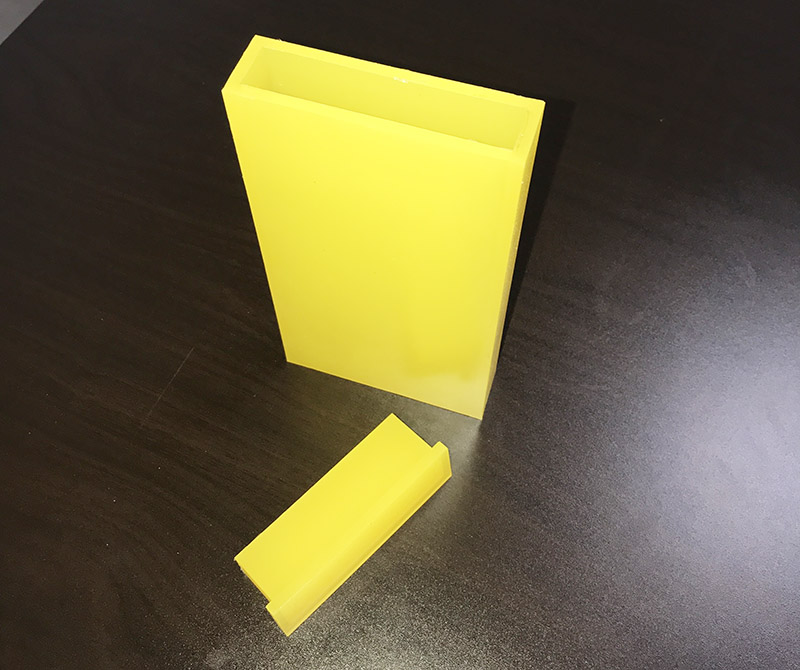

Isostatic pressing
Isostatic pressing
Isostatic pressing is to place the object to be processed in a closed container filled with liquid, and gradually pressurize it through a pressurization system to apply equal pressure to each surface of the object, so that the molecules can be reduced without changing the appearance and shape. The distance between them increases the density and improves the physical properties of the material.
Isostatic pressing is to add granulated ceramic material into the mold. The mold material is generally plastic or rubber with certain elasticity. In the isostatic pressing machine, a uniform pressure of tens to hundreds of MPa is applied to the mold in all directions. The granulated ceramic material in the mold is compacted and formed. There are two methods of isostatic pressing: cold isostatic pressing and hot isostatic pressing. Cold isostatic pressing is divided into wet and dry.
The principle of isostatic pressing
The working principle of isostatic pressing is Pascal's law: "The pressure of the medium (liquid or gas) in a closed container can be equally transmitted in all directions." Powder molding; in the past 20 years, isostatic pressing technology has been widely used in ceramic casting, atomic energy, tool manufacturing, plastics, ultra-high pressure food sterilization and graphite, ceramics, permanent magnets, high-pressure electromagnetic porcelain bottles, biological drug preparation, food preservation, High-performance materials, military and other fields.

Cold isostatic pressing
Cold Isostatic Pressing (CIP for short) is a process at room temperature, usually with rubber or plastic as the covering mold material, using liquid as the pressure medium, mainly used for powder material molding, for further sintering, forging or heat. The isostatic pressing process provides the green body. The general operating pressure is 100~630MPa.
Warm isostatic pressing
Warm isostatic pressing technology, the pressing temperature is generally 80 ~ 120 ℃. There are also special liquid or gas transmission pressures at 250~450℃, and the operating pressure is about 300MPa. It is mainly used for graphite and polyamide rubber materials that cannot be formed by powder materials at room temperature. in order to obtain solid bodies at elevated temperatures.
Hot isostatic pressing
Hot isostatic pressing technology (HIP for short) is a process technology that makes materials undergo isostatic pressing under the simultaneous action of high temperature and high pressure. It is not only used for the consolidation of powders. The traditional powder metallurgy process is completed in two steps of forming and sintering, and is also used for diffusion bonding of workpieces, elimination of casting defects, and production of complex-shaped parts. In hot isostatic pressing, inert gases such as argon and ammonia are generally used as the pressure transmission medium, and metal or glass is usually used as the covering material. The working temperature is generally 1000~2200℃, and the working pressure is usually 100~200MPa.

Advantages of isostatic pressing technology compared to conventional forming technology
As a molding process, isostatic pressing technology has the following characteristics compared with conventional molding technology:
1. The density of products formed by isostatic pressing is high, generally 5 to 15 higher than that of one-way and two-way pressing. The relative density of HIP products can reach 99.8%~99.09%.
2. The density of the compact is uniform. In compression molding, whether it is unidirectional or bidirectional pressing, the phenomenon of uneven density distribution of green compacts will occur. This density change can often reach more than 10% when pressing complex-shaped products. This is due to the frictional resistance between the powder and the steel die. An isostatic fluid medium transmits pressure, equal in all directions. The packing and the powder are generally compressed in the same way. There is no relative movement between the powder and the packing. The frictional resistance between them is very small, and the pressure only decreases slightly. The gradient of this density drop is generally less than 1%. The bulk density is uniform.
3. Because the density is uniform, the length-diameter ratio can be unlimited, which is beneficial to the production of rod-shaped, tubular and thin and long products.
4. The isostatic pressing process generally does not need to add lubricant to the powder, which not only reduces the pollution to the product, but also simplifies the manufacturing process.
5. The products formed by isostatic pressing have excellent performance, short production cycle and wide application range.

We support all kinds of customization, if you need it, please contact us.
Phone/whatsapp:+86 18234744811
Email:sales@highindustryco.com